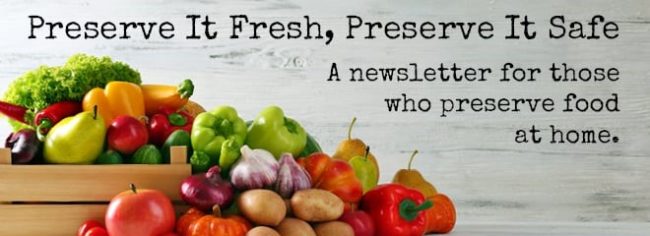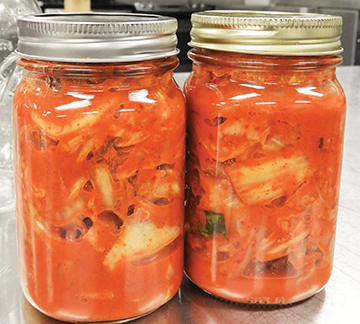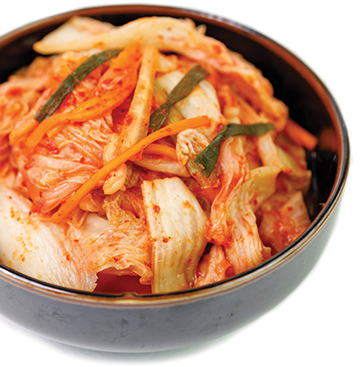
Vinegar with 5% Acidity: It Matters
Vinegar is a key flavor component in home-preserved pickles, salsa, and other acidified foods and is critical for food safety too. Research tested recipes specify vinegar with 5% acidity. For example, a family favorite recipe for Bread and Butter Pickles includes 4 cups vinegar (5% acidity).
Why is the acidity of vinegar important? White and cider vinegars for preserving are standardized to 5% acidity. Increasingly, store brands of vinegar are available with 4% acidity, so be sure to read the label!

If you choose a vinegar with 4% or lower acidity, it may not be strong enough to safely preserve food.
What about other types of vinegar? There are wine vinegars with 3 – 6% acidity, but these should not be used in home preserving. Other types of vinegars may have 6% acidity, or higher, but these vinegars are intended as household cleaners and should not be used in cooking or preserving.
Vinegar plays a critical role in safe home canning. Together with a heat processing step, the amount and type of vinegar are important to control harmful pathogens. Recipes from the National Center for Home Food Preservation and Extension sources have been research-tested to ensure both safety and quality.
Source: National Center for Home Food Preservation, National Center for Home Food Preservation and Dr. Barbara Ingham, University of Wisconsin
Kimchi – A Trendy Fermented Food!
Kimchi is a staple in Korean households and trending in the United States as more Americans are jumping on the fermentation bandwagon. There are many types of kimchi, but most are made with napa cabbage, a variety of other vegetables, non-iodized salt, and a Korean red pepper powder, known as gochugaru (GO-choo-GAH-roo).
Kimchi is made by lacto-fermentation, which is the same type of fermentation used to make sauerkraut. The natural bacteria (primarily Lactobacilli) found on fresh vegetables converts the sugars into lactic acid, as well as carbon dioxide, removing oxygen and making the food more acidic, which preserves the veggies and gives them a tangy flavor. This environment encourages the growth of good bacteria (probiotics) while inhibiting the growth of harmful microorganisms and spoilage bacteria.

Since fermentation occurs in an environment with little to no oxygen, proper safety practices must be taken to prevent the bacterium Clostridium botulinum from producing the deadly botulinum toxin. Proper salting is key to reduce harmful bacteria’s ability to grow, while encouraging fermenting bacteria to thrive. Always follow a tested recipe and use the exact amount of salt the recipe calls for. In addition, it’s also a good practice to measure the pH of the kimchi at the end of the fermentation process using commercial test strips or a pH meter and verify that the product is at a safe acidity level of 4.6 or below. Be sure to maintain a clean environment, keep the kimchi submerged under the brine, and limit any exposure to oxygen, which can cause mold growth. Monitor the temperature of the fermentation and don’t allow it to exceed 85°F, as spoilage microorganisms can take over. When fermentation is complete, store the product in the refrigerator.

Originally published by the University of Missouri Extension
Print or share this newsletter



